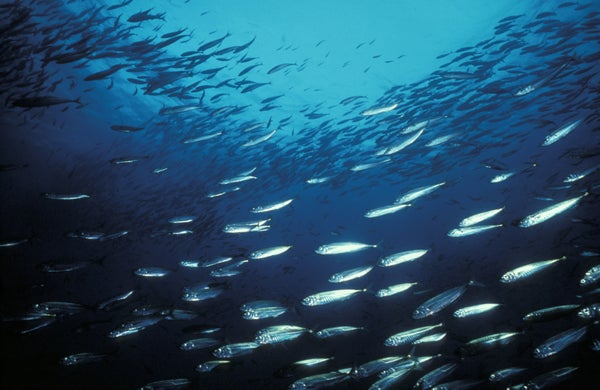For centuries, fishers in Narrangansett, R.I., have plied the waters of the northwestern Atlantic for herring—small, schooling fish that are also a staple for ocean predators. But as climate change warms the world’s seas, the herring these fishers rely on are vanishing at the southern end of their range and turning up more often at its northern edges. This situation is playing out in ocean waters the world over: concentrations of marine animal populations have been shifting away from the equator and toward the poles during the course of the past century, according to one of the most comprehensive analyses of marine species distributions to date. These movements could wreak havoc on food webs and endanger the livelihoods of people who depend on key fisheries, researchers say.
“These are changes that are actually taking place in established, local communities,” says study co-author Martin Genner, a fish ecologist at the University of Bristol in England. “It’s about changes in the species people know in their environment, in the abundance of the stuff that’s already there.”
The study, published Thursday in Current Biology, analyzed how the quantity of 304 marine species—including tiny phytoplankton, seagrass, algae, fish, reptiles, marine mammals, and seabirds—has changed over the past century. The researchers gathered data from 540 abundance measurements taken in oceans around the world since the late 1800s, from the Arctic Ocean north of Alaska and through the equator to the Southern Ocean off of Antarctica. They found that studies conducted nearer to the poles were more likely to show increases in a species’ population and that those conducted nearer the equator were more likely to show a decline.
On supporting science journalism
If you're enjoying this article, consider supporting our award-winning journalism by subscribing. By purchasing a subscription you are helping to ensure the future of impactful stories about the discoveries and ideas shaping our world today.
Jennifer Sunday, a climate change ecologist at McGill University, who was not involved in the paper, says many marine species are adapted to—and therefore sensitive to—a narrower range of temperatures than terrestrial species. As a result, marine organisms are likely to be more dramatically impacted by warming. Land-based species may be less vulnerable to losing their equatorial ranges “because they have all sorts of microhabitats that they can fill,” such as burrows or other places they can cool off, Sunday explains.
Though the study did not focus on the exact mechanisms causing the shifts in marine abundance, Genner says it is not a matter of species simply migrating but is more about whether they are able to survive where they already are. Whereas some species may be able to adapt to temperature changes by expanding toward the poleward end of their range, many cannot. “For example,” he says, “if you’re a rocky shore species in the south of Tasmania, and there isn’t any rocky shore farther south, where do you go?” Species that cannot adapt or move poleward may ultimately face extinction.
The shift in species’ concentrations can have cascading effects on ecosystems. For example, some species that expand into poleward regions as waters warm may imperil local fisheries, Genner says. In one case, a type of parasitic crustacean called sea lice could become a problem for salmon farmers in the U.K. “At the moment, they’re able to keep them at bay,” Genner says. But “if you increase the temperature by a degree or two, those [sea lice] populations might well start to do much better. And as a consequence, the viability of the industry might be threatened.”
Steve Murawski, a fisheries biologist at the University of Southern Florida, who was not involved in the study, says that as species disappear from parts of their range, the change affects the resources available to the people who live in the affected areas. He notes that a large fraction of the world’s population is dependent on fish as a major source of protein. The possibility of this problem is particularly true in the tropics, where animals have a narrower scope for adapting to warming oceans because they are already so close to the upper limits of their thermal tolerance. “You’re shifting away from the equatorial areas of the globe, which tend to be in the developing world,” Murawski says. “The more we shift these resources away from traditional communities and population centers, the more we’re going to create food insecurity as well. There’s a crucial need to monitor the distribution and abundance of animals in the developing world.”
The shifts also mean some predators could lose their prey, Murawski says, because many of the more temperature-sensitive animals tend to be small species that form the bases of food chains. The loss of such species could ripple up those chains, making it more difficult for predators to survive.
Given that marine species are subject to many stressors in addition to climate change, having conservation programs that address some of those other factors—such as overfishing or the loss of habitat—may provide a buffer against the impacts of temperature increases, Genner says. “We don’t know how much that will actually work in the marine environment right now, but it can’t actually hurt,” he says. “It will require things like reduction in harvesting and [changing] our ways of using the marine environment.”
